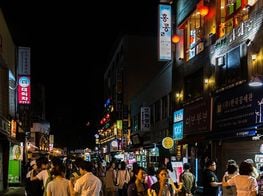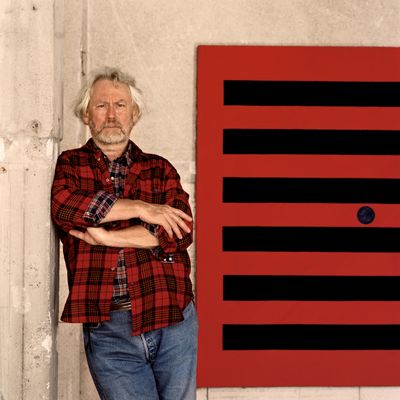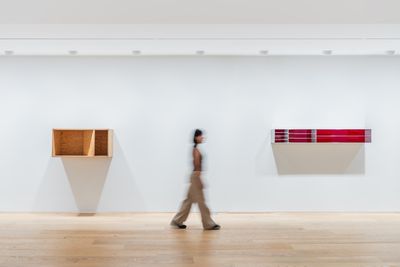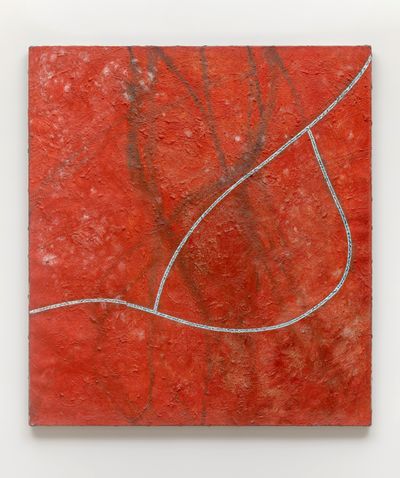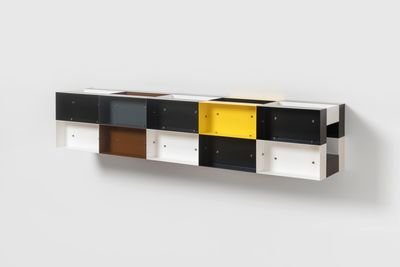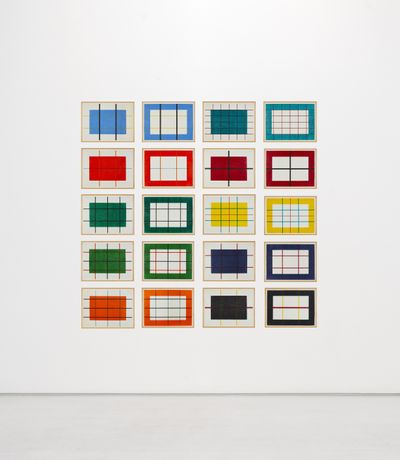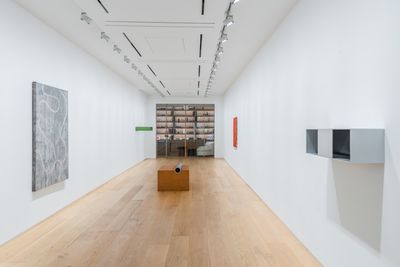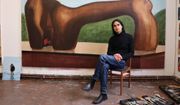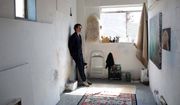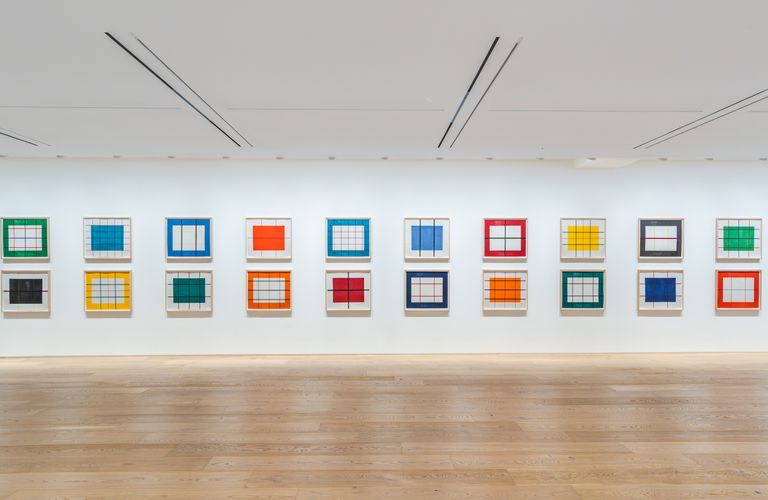
Flavin Judd on His Father’s Legacy and Ties to Korea
Donald Judd's minimalist vision revolutionised the art world. Famed today for his sculptures, including what he referred to as 'stacks' of square and rectangular boxes made from industrial materials, Judd first came to art as an abstract painter.
He embraced a curiosity for the formal properties of colour, material, form, and space, and began to make three-dimensional objects in the 1960s—a practice he considered far more compelling, truthful, and precise to life than painting on a flat plane.
On the occasion of the American minimalist's solo exhibition at Thaddaeus Ropac Seoul Fort Hill (4 September–20 October 2023), Judd Foundation Artistic Director Flavin Judd sits down with Ocula Director Eva Fuchs to discuss his father's life, work, and ties to Korea that stretch back to an army posting when he was only 18.
You could have chosen from so many works for this exhibition. Why these?
There is no overall theme or philosophical intent. I wanted to show how the works interact with and use the space. It's simply about space, colour, and working with the architecture. In this case, the gallery is very long and narrow, which presents limitations.
The exhibition is the first solo show of Don's work in South Korea in nearly ten years. If you're not on the normal art circuit, you probably haven't seen these works in a long time.
Donald Judd was stationed with the army in Korea in 1947 where he worked as an engineer. What did he tell you about his experiences there?
Don claimed that he didn't really know what he was doing and left it to the work crew to figure out how to build the boiler plant that he had been assigned to.
Seeing how something is built can be very instructional, as can seeing a different culture. He was only 18 years old and had never left the United States until then. And this was before the Korean War [1950–1953], of course.
He returned to South Korea in 1991, after which he produced woodcuts on hanji paper—20 of which are on show in the exhibition. In what ways did they build on, diverge from, or expand his practice?
The hanji paper prints are interesting because Don started as a painter and struggled with the idea of what to do with a flat plane. After several years, he concluded that three-dimensional objects were vastly more interesting and accurate to real life.
You see this in the parallel developments of his artworks and prints. For example, he started painting straight lines when his father, who made woodcuts for him, got a routing tool that could make straight lines.
Even after Don came off the wall and started making floor works that went beyond shallow reliefs, he continued to make two-dimensional hanji paper prints. They were a way to experiment with flat planes—he said that while it's a contradiction, they were fun to make.
If you look at his prints, you can see there is a lot of playing around. There's variation in what he's doing. The prints became an outlet for him to use a lot of colour.
You've said that 'the semiotic system of culture is temporary and arbitrary... Don was interested in the solid world, in the earth of gardens, in the galaxies, and made art that brought you back to that world, back to where you are because that's what you really have.' Could you expand on this?
For 40,000 years, art has been about the representation of reality and the manipulation of materials into symbolic representations. Don spent over 12 years struggling to figure out how to paint because there was a contradiction between what he wanted to do and the idea of painting itself. With paint, you are representing something—even if it's a Yves Klein monochrome, it's still something on a flat plane.
Don didn't do well with semiotic systems, illusions, and the misrepresentation of things. To distance himself, he focused on the materials. He began to engage with the colour and space of art, and by doing so, he inevitably moved away from painting.
Though this idea isn't exactly new, he learned a lot from his predecessors in the abstract expressionist style. There was a contradiction between what he grew up learning as the convention of art and the history of art. Even though he could appreciate all of this art very much, it was not what he wanted to be doing or what he was interested in.
Don was concerned with the real world. He was a scientist being an artist, interested in exploring the universe and the 'real thing'. Humans have made a semiotic system that's an overlay over the basic landscape, the thing that would be here if we were not. And that's what interested him. He was trying to figure out how to make art that engaged with that question.
Is there an ecological element to his work in the way that he wants it to be situated within the real world, in nature, and experienced by people?
Certainly, in the sense that his work is very closely related to a morality. The morality being that you shouldn't need a representational system or philosophical reference to understand or make art. It should be self-evident in some obvious way.
Everybody understands what art is. The logic is within the thing itself, so you don't have to refer to something else. That's why he didn't use complicated mathematical systems because they become obscure and make the work impossible to understand.
Don's attempt at clarity is related to a morality and a kind of preservation of energy and land, so you don't waste things. That is certainly related to an ecological concern. If you think that everything we know, understand, or are with is here, on this earth, you start to become very interested in the planet—because that's all you have.
There is a moral aspect to Don's work, as well as a democratic and environmental aspect. But he doesn't necessarily want art to be about that. It just happens to come from the same source.
It's amazing to see how many areas Judd was active in, including his foray into architecture and furniture design. I've read that several of his designs never materialised. Are the plans for those projects still around?
There are a number of unrealised designs, but not a huge amount because he was only just getting started, really. He was asked to design an entire museum wing while he was in the hospital, but unfortunately never got to think about it. There would have been a lot more architecture and design had he lived even ten years longer.
For Don, projects that involved space and design were not separate. There was no contradiction in designing your own spaces or making your furniture, even though he was a terrible carpenter and did not make the furniture himself. He had no patience for it, and clearly, other people were better at it. So why not let them do it?
Growing up, was everything in the house designed by him?
No, not everything. He only started making furniture after we started going to school in Marfa, Texas, and needed desks. His furniture only really began to develop in the 1970s.
Before that, furniture wasn't so present. When we moved to Marfa, there was no furniture to buy. Even if you ventured to El Paso, you were still stuck with plastic lawn chairs. There was no internet delivery back then, so we were kind of stuck.
Next year it will be 30 years since your father died. With your sister, you have successfully run the Judd Foundation and contributed to his projects, such as the Chinati Foundation.
In 2021, the Foundation's representation moved from David Zwirner to Gagosian, alongside ongoing representation by Thaddaeus Ropac in Europe, and Caitlin Murray was appointed executive director at Chinati. How do these changes inform the estate's future and Donald Judd's legacy?
It's all business as usual. We've been doing this for a long time, and there are many positive developments, but I don't think any of them are a big deal—there's no big scheme.
We restored 101 Spring Street in New York ten years ago, and still have a lot of buildings to restore. La Mansana de Chinati (The Block) in Marfa, where Don's residence and studio are based, is our main focus right now. —[O]
Main image: Donald Judd, untitled (1992–1993/2020). Set of twenty woodcuts in cadmium red, cadmium yellow, cadmium orange, ultramarine blue, cerulean blue, cobalt blue, permanent green, viridian green, black, and alizarin crimson on handmade Korean paper. 60 x 80 cm (each). Exhibition view: Donald Judd, Thaddaeus Ropac Seoul Fort Hill (4 September–20 October 2023). © Donald Judd Art, Judd Foundation/Artists Rights Society (ARS), New York. Courtesy Thaddaeus Ropac, London/Paris/Salzburg/Seoul.
Selected Works by Donald Judd
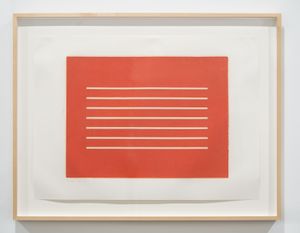
38.7 x 52.1 cm
On Hold Sean Kelly
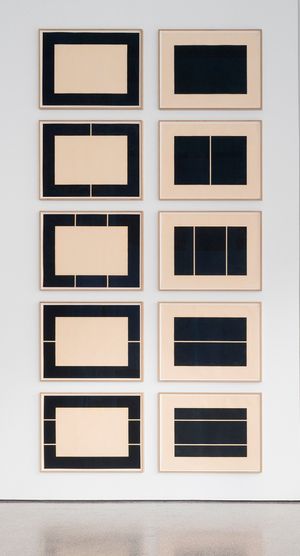
59.7 x 80 cm Galerie Greta Meert
Request Price & Availability

David Zwirner

Marian Goodman Gallery
Request Price & Availability


